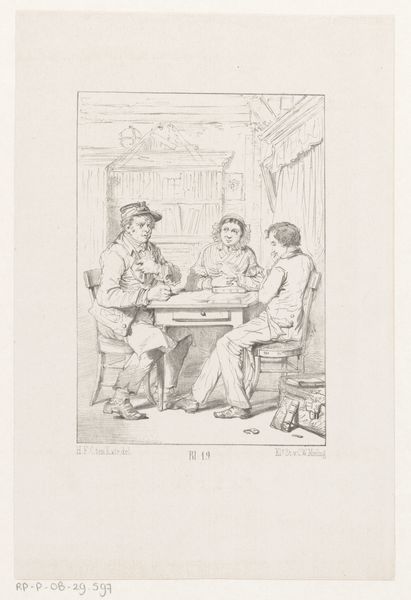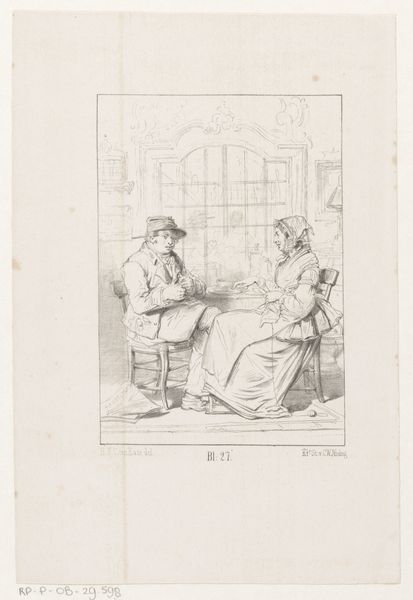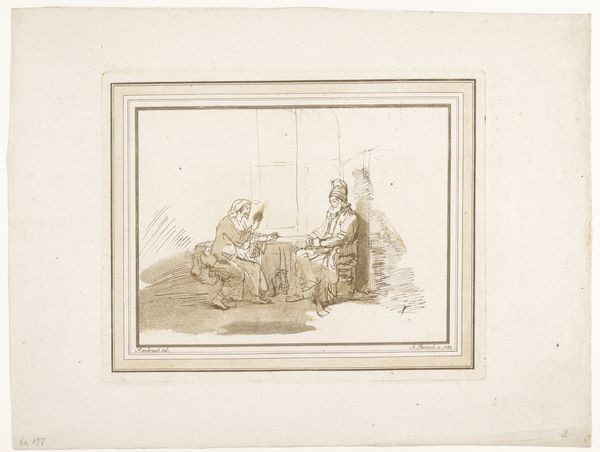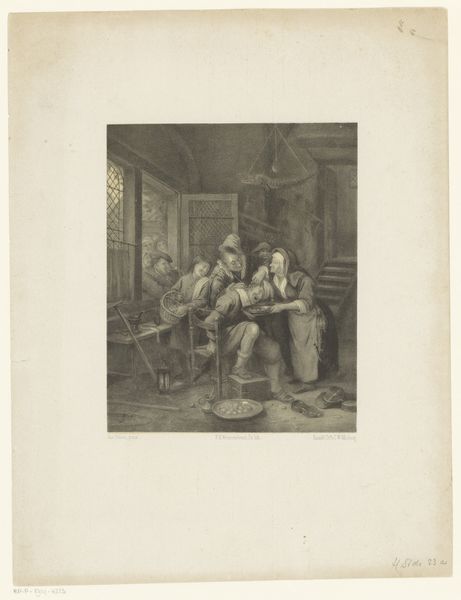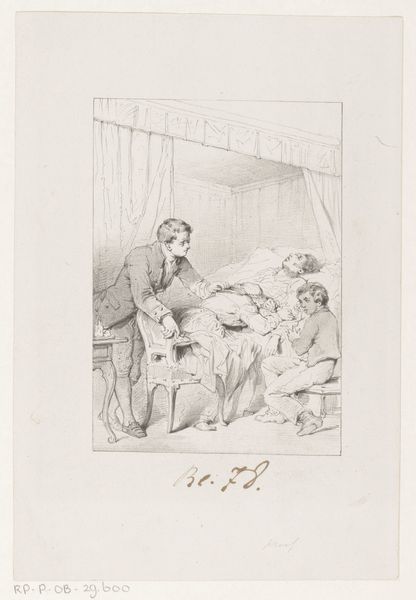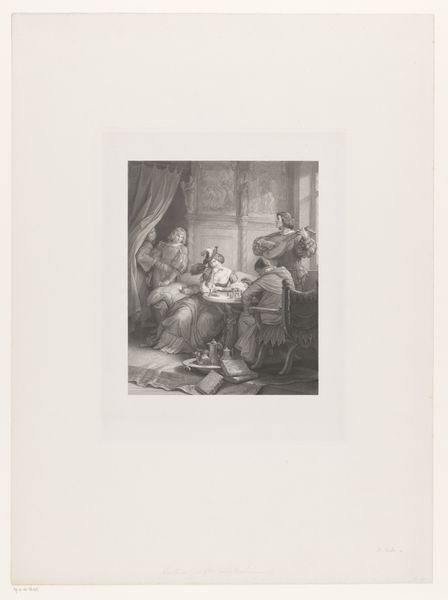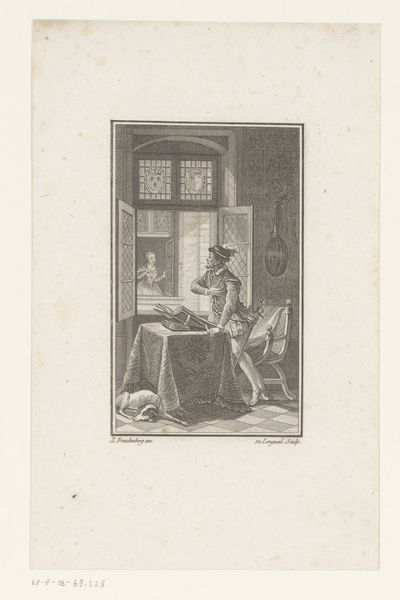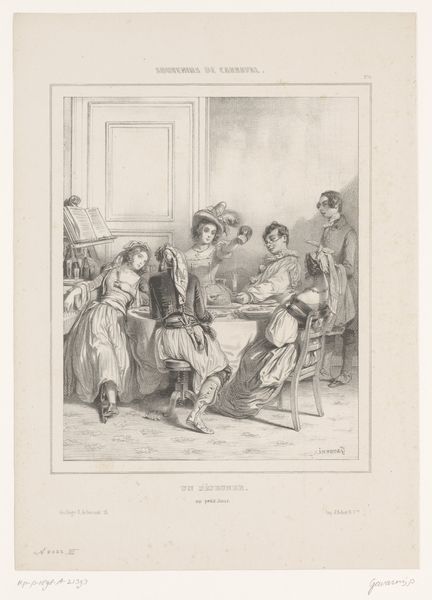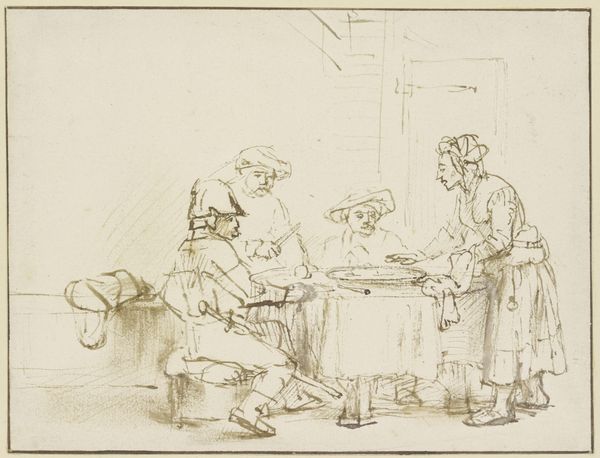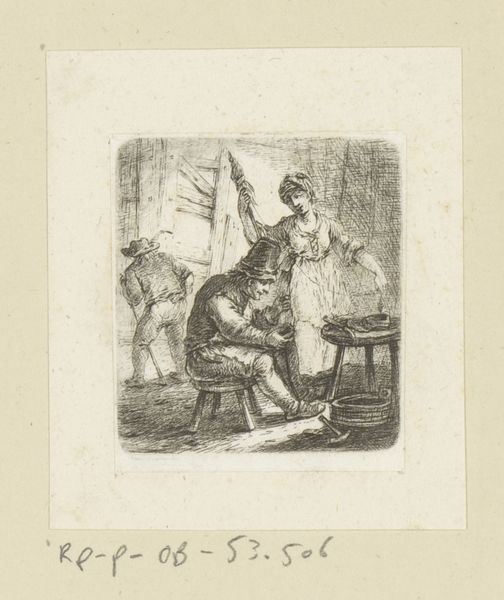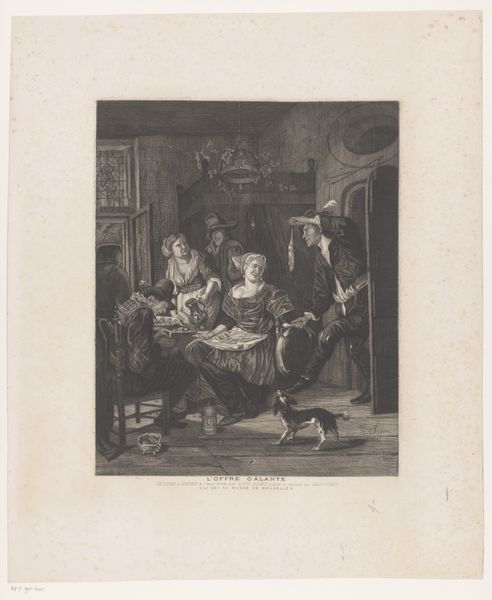
drawing, pencil
#
portrait
#
drawing
#
pencil
#
genre-painting
#
realism
Dimensions: height 244 mm, width 166 mm
Copyright: Rijks Museum: Open Domain
Editor: This drawing, "Man ontvangt twee vrouwen" or "Man receives two women," is by Herman Frederik Carel ten Kate and dates to sometime between 1832 and 1891. It’s a pencil drawing that reminds me of a scene from a novel, quite intimate, but something seems a bit off, maybe awkward. What catches your eye in this piece? Curator: The image vibrates with the echoes of proverbs and social mores, doesn't it? Consider the implied narrative: the man at his desk, the two women approaching him. How do their postures, their implied relationship to each other, and even the presence of the animals shape the cultural memory embedded in the scene? Is this a scene of supplication, judgment, perhaps reconciliation? Look at the light. What emotional cues do you draw from it? Editor: It’s interesting you mention the light. The drawing is so detailed, yet subdued. I hadn't considered how that adds to the complexity of the figures' relationships, this tension you’re talking about. But why are those details relevant, in a psychological sense? Curator: Details such as the dress, the man's wig, the dog asleep, all are symbolic of the time and create meaning; what can those things tell us about a specific social standing and set of behaviors of this community in their environment? What do we remember? These domestic markers, even in their stillness, activate recognition in the viewer. Doesn't the dog’s calm, juxtaposed against the women’s apparent distress, speak volumes? Editor: That is thought-provoking. So the seemingly mundane objects—a sleeping dog or a wig—become charged with social significance and project a sense of memory to the viewer. I see this genre scene differently now! Thank you. Curator: And what does it reveal to us about how we see today, and how those social expectations shifted? Art becomes a mirror, doesn't it?
Comments
No comments
Be the first to comment and join the conversation on the ultimate creative platform.
